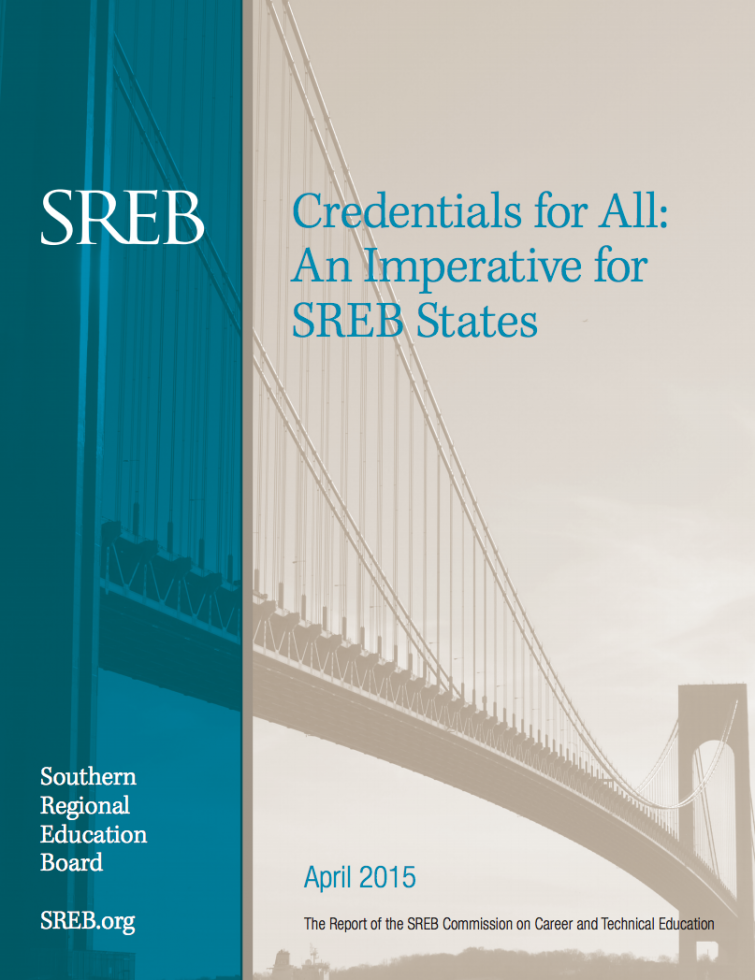Career Pathways
High Quality Career Pathways
High school to college and the workplace
Labor market economists project that by 2020, two-thirds or more of all jobs will require some postsecondary education — either a certificate, a credential or a degree at the associate level or higher. At present, however, the Southern Regional Education Board’s analyses of educational attainment data suggest that millions of young Americans are being left behind in the transition from high school to college and well-paying jobs. Significant numbers will never graduate, and many who do go on to college will not complete a credential with value in the marketplace.
Credentials for All: An Imperative for SREB States, the report of the SREB Commission on Career and Technical Education, offers a powerful solution to this problem: Provide more than one pathway to college and careers.
Action 1: Build bridges from high school to postsecondary education and the workplace by creating rigorous, relevant career pathways driven by labor market demand.
What do rigorous career pathways look like?
High-quality career pathways help more young adults bridge the gap between high school, advanced education and training programs, and high-skill, high-wage jobs in the career fields that matter to our state and regional economies. Instead of foreclosing options, career pathways bring purpose to learning because they help students see further studies as a gateway to earning a meaningful credential linked to real workforce opportunities.
Many states are seeking to transform their educational systems and ensure their future economic security by building career pathways that span high school, postsecondary studies and the workplace. Credentials for All offers states suggested policies and practices for building pathways and challenges them to double the number of young adults with the postsecondary credentials they need to launch careers.
What do rigorous career pathways look like? They teach college-ready academics, relevant technical knowledge and skills and workplace know-how in the context of broad career fields in high school, and teach more specialized skills at the postsecondary level. They align with state and regional labor market opportunities because states and school districts work with business, industry, K-12 and postsecondary partners to design and build them. Career pathways make business a full partner in education and ensure that employees have the foundational knowledge and skills needed to adapt to constantly changing workplace requirements.
Bring purpose to learning
Career pathways help students see their studies as a gateway to real workforce opportunities. Strong career guidance systems can show students the many routes to further education and fulfilling careers.
Students explore careers, use what they learn in the classroom to solve real-world problems and acquire technical skills and workplace skills through hands-on experiences guided by caring adults. They attract students of all achievement levels and educational and career aspirations and enhance their readiness for college and careers by preparing them with the foundational literacy, math and science skills needed in many fields.
Career pathways also put more high school students on the fast track to earning industry and postsecondary credentials — some even as they graduate from high school. Although the future is always uncertain, higher education attainment can protect individuals from economic instability and enable more young people to buy homes, start families, and participate as citizens and informed consumers in our democracy.
One example: Advanced Career
SREB’s Advanced Career curricula, designed in partnership with states across the country, help students master complex academic and technical concepts and graduate ready for the workplace and a full array of postsecondary options. Advanced Career’s project-based courses introduce students to careers in aerospace engineering, clean energy technology, energy and power, global logistics, health informatics, informatics, manufacturing, oil and gas, and STEM. When implemented with fidelity, career pathways like these can increase graduation rates and close readiness gaps.




